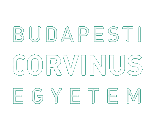Bajusz, Orsolya (2023) When Activism, Tactical Media, Visual And Participatory Media Involve High Stakes: Investigating The Visual And Participatory Aspects Of Science Communication. Doktori (PhD) értekezés, Budapesti Corvinus Egyetem, Szociológia és Kommunikációtudomány Doktori Iskola. DOI https://doi.org/10.14267/phd.2023025
Teljes szöveg
|
PDF : (dissertation)
2MB | |
|
PDF : (draft in English)
148kB | |
|
PDF : (az értekezés tézisei magyar nyelven)
157kB |
Kivonat, rövid leírás
My research looks at specific applications and methods of the participatory model of science communication: the toolkit based on visual media, performance, participation, in large part derived from contemporary art (participatory art, tactical media, performance). Instead of focusing on practical applications, I carry out a more in-depth sociological analysis of such science communication, including how it exerts effects as a sociopolitical phenomenon. I conducted two case studies: on anti-GMO mobilization and pinkified cancer awareness. While constructing the cases, I describe what technologies I research, how they came to be adapted in Hungary, and who the proponents or opponents are in the debates. Focusing on the political messages and impact of visual and participatory science communication media, I research what types of ideological messages are transmitted by such media, through what mechanisms, and how far can these mechanisms be extrapolated. I analyze my data with visual methods, which I triangulate with focus groups, to inquire both about expert and lay interpretation, and whether the respondents comprehend the images’ rhetoric, or whether they relate to the topics on an affective level. I conclude that visual elements (in my cases inseparable from participation) engaged in political work by mobilising a plurality of mechanisms ̶ of weaponising subjectivity, depoliticising their producers, utilising the political work inherent in representations, shifting the discourse towards emotions, mapping ideology (meaning) onto feeling. Visual and participatory media directed discourse to the register of feelings and experience, reserving a privileged role to community-building, whilst positioning the actors outside the political field. I came to understand such science communication as public ritual: the ideological layers and political connotations of visual communications were so important that images were used as tools of ritualisation, rather than of information transmission. Art, even if rebranded as activism, entangled with science communication, will not cease to be art- that is working through a non-linear causality. In the observed cases, the real political work took place detached from discourse; in fact, in conceptual opposition to other discourses of the organisations. Unlike artists, political movements stake claims for power, and yet through novel science communication formats they can present their activity as being outside the domain of politics, whilst still having a political impact on an affective, ideological, institutional, intersubjective, and subjective level. In the cases I researched, visual and participatory media directed the discourse to the register of feeling and experience, and had a privileged role in either community-building or conferring meaning. Such media itself does political work by positioning the actors outside the political field. Through novel science communication formats, art movements are conflated with political committees, the global and corporate with the grassroots. The modernist, teleological notion of progress used to rely on science both for legitimacy and for positive sentiments. I would argue that in some instances novel formats of science communication (as public rituals) assume these roles of science, and also I suspect public rituals of science communication imbue ideology with sentiments and affects.
| Tétel típusa: | Disszertáció (Doktori (PhD) értekezés) |
|---|---|
| Témavezető: | Vicsek Lilla, Wessely Anna |
| Tárgy: | Média és kommunikáció Szociológia |
| Azonosító kód: | 1277 |
| Védés dátuma: | 17 május 2023 |
| DOI: | https://doi.org/10.14267/phd.2023025 |
| Elhelyezés dátuma: | 31 Jan 2023 07:33 |
| Last Modified: | 01 Jun 2023 11:16 |
Csak a repozitórium munkatársainak: tétel módosító lap

 Letöltési statisztika
Letöltési statisztika Letöltési statisztika
Letöltési statisztika